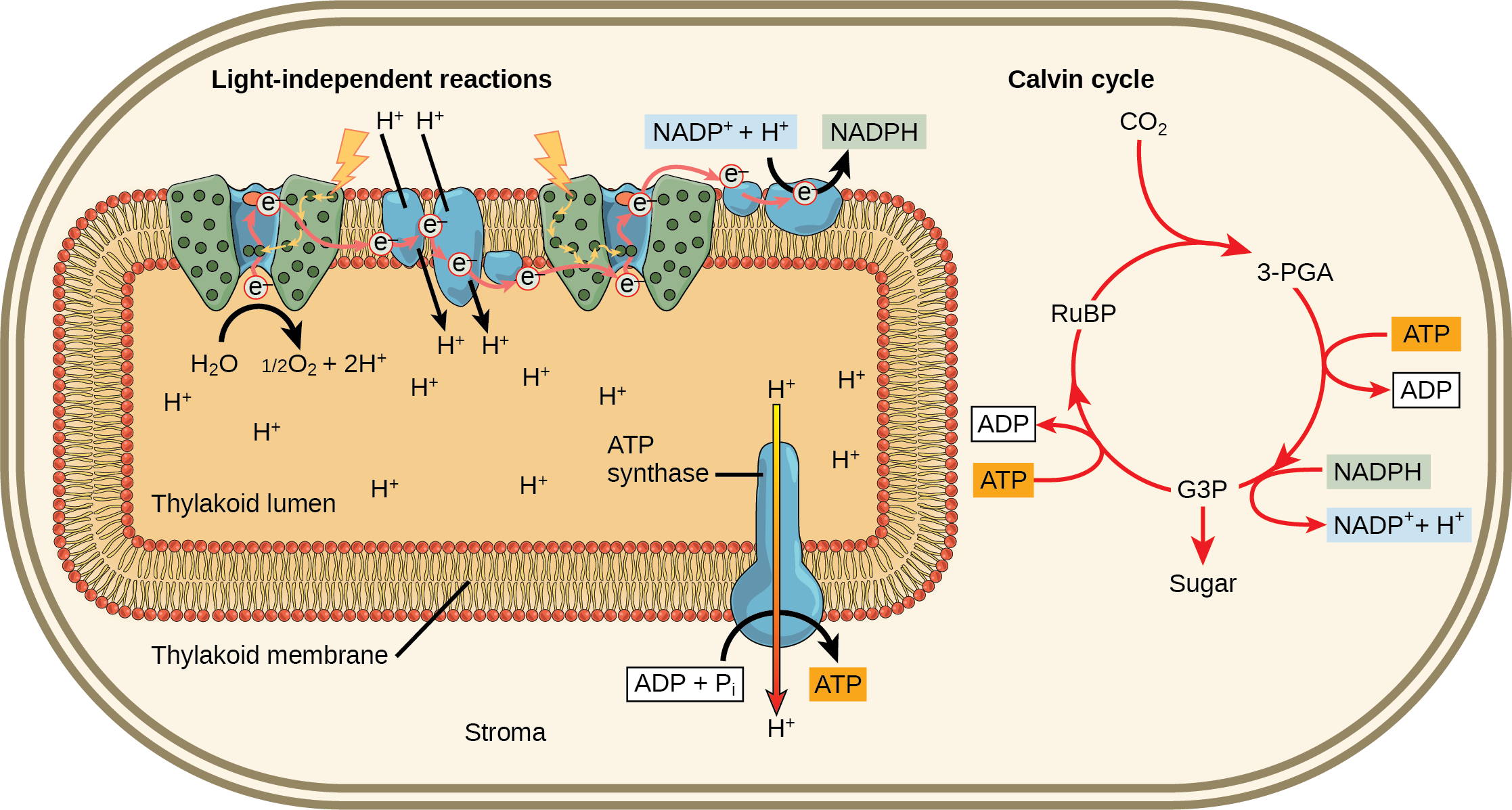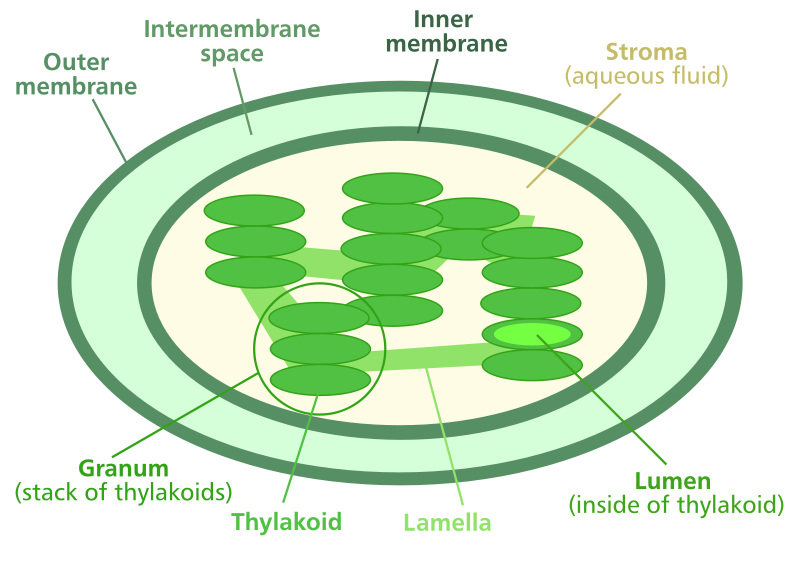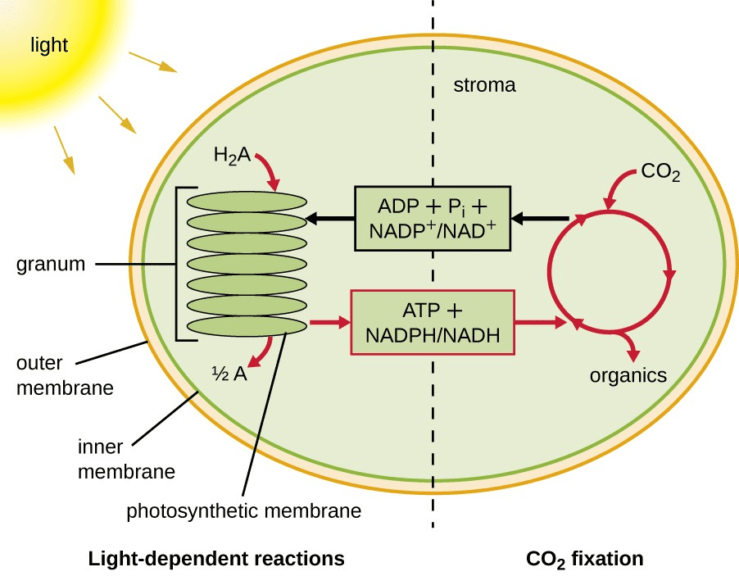What is the function of the stroma in chloroplast? This intricate, gelatinous matrix within the chloroplast serves as the bustling hub of photosynthesis, a process that sustains life on Earth. It is here, within the stroma, that the magic of converting sunlight into energy unfolds, a symphony of enzymes, proteins, and intricate reactions orchestrated by the very essence of life.
Imagine the chloroplast as a miniature factory, with the stroma acting as its bustling production floor. It houses the machinery necessary for the Calvin cycle, a crucial stage of photosynthesis where carbon dioxide is transformed into sugar, the fuel that powers plant growth and ultimately nourishes the entire ecosystem.
Structure of the Chloroplast

The chloroplast, the site of photosynthesis in plant cells, is a complex organelle with a highly organized internal structure. This intricate organization allows for the efficient capture of light energy and the conversion of carbon dioxide into sugars. The chloroplast is divided into distinct compartments, each with specialized functions that contribute to the overall process of photosynthesis.
Compartments of the Chloroplast
The chloroplast is comprised of several distinct compartments, each with a specific role in photosynthesis. These compartments are:
- Outer Membrane: The outermost layer of the chloroplast, it is selectively permeable and controls the movement of molecules in and out of the organelle.
- Inner Membrane: Located beneath the outer membrane, the inner membrane encloses the stroma and thylakoid system. It is also selectively permeable, regulating the passage of molecules into and out of the stroma.
- Stroma: The fluid-filled space between the inner membrane and the thylakoid membrane. It contains enzymes for carbon fixation and other metabolic processes, as well as DNA, ribosomes, and starch granules.
- Thylakoid Membrane: A system of interconnected, flattened sacs called thylakoids. This membrane is the site of light-dependent reactions of photosynthesis.
- Grana: Stacks of thylakoids, which are connected by interconnecting membranes called lamellae. The grana are the sites of chlorophyll and other pigments, and they play a crucial role in light absorption and energy conversion.
| Compartment | Function | Location |
|---|---|---|
| Outer Membrane | Controls the movement of molecules into and out of the chloroplast | Outermost layer of the chloroplast |
| Inner Membrane | Regulates the passage of molecules into and out of the stroma | Beneath the outer membrane |
| Stroma | Contains enzymes for carbon fixation and other metabolic processes, as well as DNA, ribosomes, and starch granules | Fluid-filled space between the inner membrane and the thylakoid membrane |
| Thylakoid Membrane | Site of light-dependent reactions of photosynthesis | System of interconnected, flattened sacs called thylakoids |
| Grana | Stacks of thylakoids, sites of chlorophyll and other pigments, crucial for light absorption and energy conversion | Stacks of thylakoids connected by interconnecting membranes called lamellae |
The Stroma

The stroma, a vital hub within the chloroplast, is a semi-fluid matrix that surrounds the thylakoid membranes. It is a dynamic environment that plays a crucial role in photosynthesis, the process by which plants convert light energy into chemical energy.
Composition of the Stroma, What is the function of the stroma in chloroplast
The stroma is a complex mixture of enzymes, proteins, and DNA, each contributing to its diverse functions.
- Enzymes: The stroma houses a vast array of enzymes, including those involved in the Calvin cycle, a key step in photosynthesis where carbon dioxide is converted into sugar. These enzymes catalyze various biochemical reactions, enabling the efficient conversion of light energy into chemical energy.
- Proteins: The stroma also contains numerous proteins, including those involved in the synthesis of chlorophyll, the pigment responsible for absorbing light energy. These proteins contribute to the structural integrity of the stroma and regulate various metabolic processes.
- DNA: The stroma contains its own DNA, called chloroplast DNA (cpDNA), which encodes for some of the proteins required for photosynthesis. This DNA replicates independently of the nuclear DNA, highlighting the unique nature of chloroplasts.
Functions of the Stroma
The stroma is a vital component of the chloroplast, playing a crucial role in photosynthesis, specifically in the Calvin cycle. This fluid-filled space houses the enzymes and molecules necessary for the conversion of carbon dioxide into sugar, a process that fuels the growth and development of plants.
The Stroma’s Role in the Calvin Cycle
The Calvin cycle, also known as the light-independent reactions, takes place within the stroma. This cycle utilizes the energy stored in ATP and NADPH, produced during the light-dependent reactions, to convert carbon dioxide into glucose. The stroma provides the necessary environment for this complex series of reactions to occur.
The Stroma Provides a Suitable Environment for the Calvin Cycle
The stroma’s composition is carefully regulated to ensure the optimal conditions for the Calvin cycle. Its fluid nature allows for the movement of molecules and enzymes, facilitating the chemical reactions that take place. The stroma also contains a high concentration of dissolved ions, such as magnesium, which are essential for the activity of Calvin cycle enzymes.
The Importance of Enzymes and Proteins in the Stroma
The stroma houses a diverse array of enzymes and proteins that catalyze the reactions of the Calvin cycle. These enzymes play crucial roles in:
- Carbon fixation: The initial step of the Calvin cycle involves the incorporation of carbon dioxide into an organic molecule, catalyzed by the enzyme RuBisCO. This process is essential for converting inorganic carbon into a usable form for the plant.
- Reduction of carbon dioxide: The carbon dioxide molecule is then reduced, using the energy from ATP and NADPH, to form glucose. This reduction process is facilitated by a series of enzymes, including glyceraldehyde 3-phosphate dehydrogenase (GAPDH) and phosphoribulokinase (PRK).
- Regeneration of RuBP: The Calvin cycle concludes with the regeneration of the initial carbon dioxide acceptor, ribulose 1,5-bisphosphate (RuBP). This crucial step is catalyzed by the enzyme sedoheptulose 1,7-bisphosphatase (SBPase) and ensures the continuous operation of the cycle.
Stroma’s Interplay with Thylakoids: What Is The Function Of The Stroma In Chloroplast

The stroma, the semi-fluid matrix within a chloroplast, and the thylakoid membranes, intricate networks of interconnected sacs, are intricately linked in the process of photosynthesis. This interconnectedness allows for a seamless flow of energy and molecules, enabling the chloroplast to effectively convert sunlight into chemical energy.The stroma acts as a central hub for the light-independent reactions of photosynthesis, also known as the Calvin cycle.
This cycle utilizes the products of the light-dependent reactions, which occur within the thylakoid membranes, to synthesize glucose, the primary energy source for most organisms.
The Stroma Receives Products from the Light-Dependent Reactions
The light-dependent reactions, taking place within the thylakoid membranes, capture light energy and convert it into chemical energy in the form of ATP and NADPH. These energy-rich molecules are then transported from the thylakoids into the stroma.
- ATP: Adenosine triphosphate, a high-energy molecule, is generated through the process of photophosphorylation within the thylakoid membranes. It acts as the primary energy currency for cellular processes, including the Calvin cycle.
- NADPH: Nicotinamide adenine dinucleotide phosphate, a reduced electron carrier, is produced during the light-dependent reactions. It carries high-energy electrons that are crucial for the reduction of carbon dioxide in the Calvin cycle.
The Stroma Utilizes Products from the Light-Dependent Reactions to Drive the Calvin Cycle
The stroma, receiving ATP and NADPH from the thylakoid membranes, becomes the site of the Calvin cycle. This cycle uses these energy-rich molecules to fix carbon dioxide, ultimately synthesizing glucose.
- Carbon Dioxide Fixation: The Calvin cycle begins with the fixation of carbon dioxide into an organic molecule, ribulose-1,5-bisphosphate (RuBP), catalyzed by the enzyme rubisco. This step initiates the process of converting inorganic carbon into organic molecules.
- Reduction of Carbon: The fixed carbon dioxide is then reduced using the energy from ATP and the reducing power of NADPH. This series of reactions leads to the formation of glucose, the primary product of photosynthesis.
- Regeneration of RuBP: The Calvin cycle is a cyclical process, and the final step involves the regeneration of RuBP, ensuring the continuation of the cycle. This regeneration requires ATP and ensures the continuous fixation of carbon dioxide.
Stroma’s Role in Other Processes
The stroma’s function extends beyond photosynthesis, playing a crucial role in various cellular processes, contributing to the chloroplast’s overall functionality and the plant’s growth and development.
Chloroplast Division
Chloroplasts, like other organelles, replicate through a process called binary fission. The stroma houses the necessary machinery for this division, including proteins involved in DNA replication, chromosome segregation, and the formation of new chloroplast membranes. The stroma provides the environment for the assembly of these proteins and the coordination of the division process.
Synthesis of Essential Molecules
The stroma is a hub for the synthesis of various essential molecules required for plant growth and development. It houses enzymes responsible for:* Amino Acid Synthesis: The stroma contains enzymes involved in the synthesis of amino acids, the building blocks of proteins. These amino acids are essential for the plant’s growth, development, and metabolic functions.
Fatty Acid Synthesis
The stroma is also involved in the synthesis of fatty acids, which are essential components of cell membranes and other important molecules.
Nucleic Acid Synthesis
The stroma contains the necessary enzymes for the synthesis of nucleic acids, such as DNA and RNA, which are essential for genetic information storage and protein synthesis.
Stroma’s Potential Role in Other Metabolic Processes
The stroma’s role in other metabolic processes within the plant cell is still being explored. However, some evidence suggests that it may participate in:* Nitrogen Metabolism: The stroma may play a role in nitrogen metabolism, as it contains enzymes involved in the assimilation of nitrate, a crucial nutrient for plant growth.
Sulfur Metabolism
The stroma may also be involved in sulfur metabolism, which is essential for the synthesis of amino acids, vitamins, and other vital molecules.
Carbon Fixation
The stroma’s role in carbon fixation extends beyond the Calvin cycle. It may also participate in other pathways for carbon assimilation, particularly in plants with specialized carbon metabolism.
Stroma and Environmental Factors
The stroma, the gel-like matrix within chloroplasts, is a dynamic environment that responds to changes in external conditions, particularly light intensity, temperature, and CO2 levels. These environmental factors significantly influence the rate and efficiency of photosynthesis, and the stroma exhibits remarkable adaptations to optimize its function in response to these variations.
Light Intensity and Stroma Activity
Light intensity plays a crucial role in photosynthesis, directly affecting the rate of light-dependent reactions occurring within the thylakoid membranes. These reactions generate ATP and NADPH, essential energy carriers for the Calvin cycle, which takes place in the stroma.
- Under high light intensity, the stroma responds by increasing the synthesis of photosynthetic enzymes, particularly those involved in the Calvin cycle, such as Rubisco, which catalyzes the first step of carbon fixation. This enhances the capacity of the stroma to utilize the increased energy supply from the light-dependent reactions.
- Conversely, under low light conditions, the stroma reduces the production of these enzymes, conserving resources and preventing excessive energy expenditure.
- Furthermore, the stroma can also adjust the size and number of thylakoid membranes, influencing the efficiency of light absorption and energy transfer. This adaptation allows the chloroplast to maximize light capture under low light conditions and minimize photodamage under high light conditions.
Temperature and Stroma Activity
Temperature is another critical factor influencing the activity of the stroma. The optimal temperature for photosynthesis varies depending on the plant species, but generally, enzymatic reactions within the stroma function best within a specific temperature range.
- At temperatures above the optimum, the activity of enzymes involved in the Calvin cycle can be disrupted, leading to a decrease in photosynthetic efficiency.
- At low temperatures, the rate of enzymatic reactions slows down, reducing the overall rate of photosynthesis.
- The stroma can adapt to temperature fluctuations by adjusting the composition of its membrane lipids, which influence the fluidity and stability of the membranes at different temperatures. This helps maintain the integrity of the stroma and ensure optimal functioning of its enzymes.
CO2 Concentration and Stroma Activity
CO2 is a crucial substrate for photosynthesis, and its concentration in the environment directly affects the rate of carbon fixation in the stroma.
- When CO2 levels are high, the stroma can increase the activity of Rubisco, the enzyme responsible for carbon fixation, leading to a higher rate of photosynthesis.
- However, under low CO2 conditions, the stroma exhibits several adaptations to optimize carbon fixation. One strategy involves increasing the production of Rubisco, enhancing its ability to capture limited CO2.
- Additionally, the stroma can increase the concentration of other enzymes involved in the Calvin cycle, further enhancing carbon fixation efficiency.
- Some plants, like C4 plants, have evolved specialized mechanisms to concentrate CO2 around Rubisco, even under low atmospheric CO2 levels, further optimizing carbon fixation in the stroma.
The stroma, a dynamic and essential component of the chloroplast, stands as a testament to the intricate beauty of nature’s design. It is within this gelatinous matrix that the very essence of life unfolds, a symphony of reactions that fuel the planet’s ecosystem. Understanding the function of the stroma unveils a deeper appreciation for the complex processes that sustain life, a reminder of the interconnectedness of all living things.
FAQ Insights
What are the key enzymes present in the stroma?
The stroma contains a variety of enzymes crucial for the Calvin cycle, including Rubisco, which catalyzes the initial fixation of carbon dioxide, and other enzymes responsible for carbohydrate synthesis.
How does the stroma connect to the thylakoid membranes?
The stroma surrounds the thylakoid membranes, providing a physical link between the two compartments. This connection allows for the transfer of energy and products between the light-dependent reactions in the thylakoids and the Calvin cycle in the stroma.
What is the role of the stroma in chloroplast division?
The stroma plays a vital role in chloroplast division, providing the necessary environment and components for the process. It contains the DNA and enzymes required for replication and the formation of new chloroplasts.
Can environmental factors directly impact the stroma?
Yes, environmental factors such as light intensity, temperature, and CO2 levels can significantly influence the activity of the stroma. For example, high light intensity can stimulate the production of enzymes involved in photosynthesis, while low CO2 levels can inhibit the Calvin cycle.






